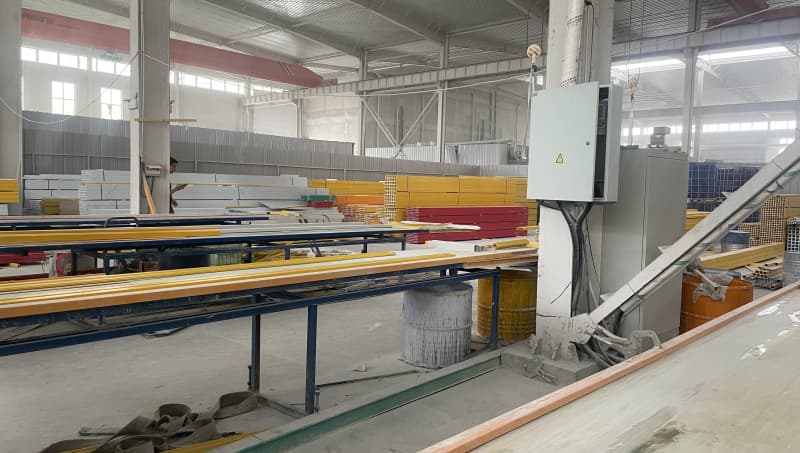Introduction
Applications of fiberglass rods span many industries because fiberglass rods (also called fiberglass reinforcing rods, GRP rods, or FRP rods) combine high strength, low weight, and corrosion resistance. Typical diameters range from 1/8 inch to 1 inch, and common lengths are 3 ft to 20 ft depending on the application. Fiberglass rods are popular for many reasons.
They are often used for:
Electrical insulation
Structural reinforcement
Marine hardware
Sports equipment
Industrial fixtures
Key Benefits and Material Grades
Fiberglass rods are usually made from E-glass or S-glass fibers. These fibers are set in a thermoset resin using pultrusion or filament winding. Typical mechanical properties (approximate, dependent on grade and resin) are:
Tensile strength: 100–200 ksi (≈690–1,380 MPa).
Modulus of elasticity: 5–13 Msi (≈34.5–89.6 GPa).
Density: about 0.065–0.09 lb/in³ (≈1.8–2.5 g/cm³). GRP/FRP rods offer high specific strength and better chemical resistance than metal options.
 Typical Applications
Typical Applications
1. Electrical & Utility
Fiberglass rods are popular for several reasons. They serve as insulating supports, antenna masts, and cable trays. Their nonconductive nature helps prevent arc tracking. For outdoor standoffs and poles, pultruded rods 3/8–1/2 inch in diameter and 6–20 ft long are common.
2. Structural Reinforcement
In civil and building projects, FRP rods are a corrosion-resistant alternative to rebar. Workers use them in concrete repair, shear connectors, and bridge deck reinforcement. Designers usually choose rods with diameters between 3/8 inch and 1/2 inch. These rods often have epoxy or vinylester coatings. This helps improve their bond strength to concrete.
3. Marine and Offshore
Fiberglass rods resist saltwater corrosion. They use them for mast spars, battens, guide rails, and composite stiffeners. Typical use cases include rods from 1/4 to 3/4 inch. You can embed them in composite laminates. You can also use them as lightweight structural members.
4. Sports and Leisure
Manufacturers use fiberglass rods in tent poles, fishing rods, hockey sticks, and other sports gear. They provide flexibility and resist impacts well. Rod diameters for tent poles typically range from 7/16 inch to 3/4 inch.
5. Industrial & Chemical
Chemical plants and wastewater facilities use GRP rods. They serve as supports, spacers, and fastening systems. These components can handle acids, alkalis, and solvents. Pullout and shear properties depend on the load case. Custom surface treatments help bond adhesives or overmolded parts better.
Selection Criteria — How to Choose the Right Rod
Material grade:
Use S-glass for the best strength and fatigue resistance.
Use E-glass for cost savings and decent dielectric properties.
Resin system: Epoxy or vinylester offers better chemical and thermal resistance than polyester. Select based on operating temperature: use silicone or high-temp epoxy for continuous service over 200 °F.
Diameter & length: Match section modulus to bending and buckling loads. For slender compressive members, increase diameter or add sheathing to prevent Euler buckling.
Surface Finish & Coating: For bonding concrete, use sanded or coated rods. Factory-applied options, like sanded epoxy, help boost mechanical interlock. For outdoor exposure, UV-resistant coatings prolong service life.
Fire & Thermal Performance:
Check the glass transition temperature (Tg).
Verify the epoxy decomposition limits.
This is important if you use them near process heaters or exhausts.
Installation & Best Practices
Pre-drill oversize holes by 1/16–1/8 inch to allow adhesive bed for bonded anchors.
Use compatible adhesives: epoxy anchors for structural loads, polyurethane for nonstructural fixtures.
For cut-to-length tasks, use diamond wheels or abrasive cutters. Deburr the ends to stop fiber splintering.
Store rods flat and supported to prevent sagging. Also, keep them safe from long-term UV exposure during storage and installation.
Case Examples (Short)
Replacing corroded steel rebar in coastal bridge expansion joints with 1/2 inch FRP rods saved maintenance costs. This change also extended the service life by about 20 years.
A composite mast for a small commercial vessel used 3/4 inch pultruded rods as stiffeners. This design cut the vessel’s weight by 15% and kept the needed stiffness.
Conclusion
Fiberglass rods have many uses and are growing in popularity. Designers want lightweight and corrosion-resistant options instead of metal. For the best results, choose the right glass type, resin system, diameter, and surface treatment. Consider the load, environment, and installation method. Fiberglass rods, known as GRP rods, FRP rods, or fiberglass reinforcing rods, provide strong and easy-to-maintain solutions. They work well in electrical, structural, marine, and recreational uses.
 Typical Applications
Typical Applications